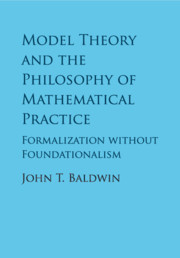3 - Categoricity
from PART I - REFINING THE NOTION OF CATEGORICITY
Published online by Cambridge University Press: 19 January 2018
Summary
Recall (page 15) Detlefsen's first question:
(IA)Which view is the more plausible – that theories are the better the more nearly they are categorical, or that theories are the better the more they give rise to significant non-isomorphic interpretations?
Button and Walsh distinguish two issues for philosophers investigating categoricity ([Button & Walsh 2016], 283): ‘determinacy of reference of mathematical language and the determinacy of truth values of mathematical statements.’ As in their paper we focus on the question of determining reference for theories that are intended to describe a single isomorphism type of a structure. With the normal background of ZFC, one can define the vocabulary τ, the domain A, and the interpretation of the τ -relations on A. This description unambiguously refers to a particular structure. The isomorphism type of A is the class of all τ -structures isomorphic to A. The number theorist Barry Mazur wrote,
the objects that we truly want enter the scene only defined as equivalence classes of explicitly presented objects. That is, as specifically presented objects with the specific presentation ignored, in the spirit of ‘ham and eggs, but hold the ham.’ [Mazur 2008]
Importantly, one can also ‘take the ham’. For example, use linear algebra to study a matrix group and apply the result to any isomorphic group (Chapter 4.7).
There are several ways that a serious issue arises. Attempting to reify the notion of isomorphism type strikes the obstacle that the collection of structures isomorphic to A is not a set. This can be resolved by bounding the set theoretic rank of the structures or considering the isomorphism class as definable in ZFC; either of these is adequate from a model theoretic perspective. Secondly, one can demand that the description be formulated in the original vocabulary and then the problem becomes categoricity. In this context, the study of categoricity begins with the choice of logic. We argue, working from our pragmatic notion of virtue, that categoricity is interesting for a few second 68 order sentences describing particular structures.
But this interest arises from the importance of those axiomatizations of those structures and not from any intrinsic consequence of second order categoricity for arbitrary theories.
- Type
- Chapter
- Information
- Model Theory and the Philosophy of Mathematical PracticeFormalization without Foundationalism, pp. 68 - 86Publisher: Cambridge University PressPrint publication year: 2018

